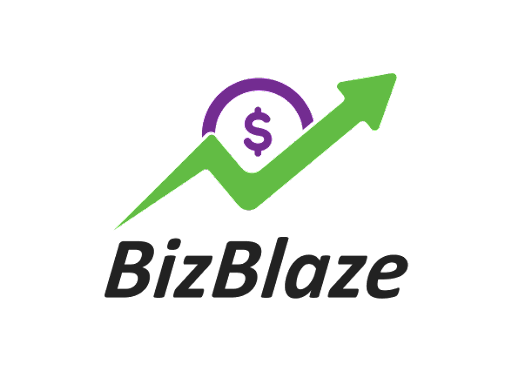Google Analytics 4 (GA4) is revolutionizing web analytics with its advanced features and user-friendly interface. Whether you’re new to GA4 or seeking deeper insights, this comprehensive guide is all you need to become an expert. Discover the benefits, features, and setup process of GA4, and gain valuable knowledge about Google Analytics assessment 4 answers, consent mode, and everything related to Google Analytics 4. Let’s dive in and unlock the full potential of GA4 for your business.
What is Google Analytics 4?

source: Google.com
Google Analytics 4 is the fourth iteration of Google’s web analytics platform, following Universal Analytics. It is designed to provide a more holistic view of user behavior across multiple devices and platforms, including websites, apps, and offline interactions. GA4 uses machine learning to provide more accurate and actionable insights, making it easier for businesses to understand their customers and make data-driven decisions.
GA4 uses an event-based data model, which is more flexible and adaptable than the session-based model used in Universal Analytics. This means that you can track any user interaction as an event, and you can get more granular insights into how users are using your website or app.
Features of Google Analytics 4
GA4 offers several new features and improvements compared to its predecessor, Universal Analytics. Some of the key features include:
- Enhanced measurement: GA4 automatically tracks events and user interactions without the need for manual code implementation, making it easier to track website and app data.
- Cross-device tracking: GA4 uses machine learning to track user behavior across multiple devices, providing a more comprehensive view of the customer journey.
- Deeper integration with Google Ads: GA4 offers a more seamless integration with Google Ads, allowing businesses to track and analyze the performance of their ads more effectively.
- Consent mode: With the increasing focus on data privacy, GA4 offers a consent mode that allows businesses to adjust their tracking based on user consent, ensuring compliance with privacy regulations.
- Predictive analytics: GA4 uses machine learning to provide insights into future customer behavior, such as which users are most likely to churn or make a purchase.
- Privacy-focused design: GA4 is designed to be privacy-focused, with features like cookieless measurement and behavioral and conversion modeling.
Benefits of Google Analytics 4
GA4 offers several benefits for businesses looking to improve their data tracking and analysis. Some of the key benefits include:
- More accurate data: With enhanced measurement and cross-device tracking, GA4 provides more accurate and comprehensive data, allowing businesses to make more informed decisions.
- Get a complete view of your customer journey: GA4 can track users across devices and platforms, so you can see how they are interacting with your business across their entire customer journey. This can help you to identify areas where you can improve the user experience and increase customer engagement.
- Get more granular insights into how users are using your website or app: GA4 uses an event-based data model, which means that you can track any user interaction as an event. This gives you more granular insights into how users are using your website or app, and it can help you to identify areas where you can improve the user experience and increase conversions.
- Make better decisions with predictive analytics: GA4 uses machine learning to provide insights into future customer behavior, such as which users are most likely to churn or make a purchase. This information can help you to make better decisions about your marketing and sales strategies.
- Protect user privacy: GA4 is designed to be privacy-focused, with features like cookieless measurement and behavioral and conversion modeling. This means that you can continue to track user behavior and get valuable insights, even as privacy regulations become more stringent.
- A better understanding of customer behavior: GA4’s machine learning capabilities provide a deeper understanding of customer behavior, allowing businesses to tailor their marketing strategies accordingly.
- Improved ad performance tracking: With deeper integration with Google Ads, GA4 allows businesses to track the performance of their ads more effectively, making it easier to optimize campaigns for better results.
- Compliance with privacy regulations: The consent mode feature in GA4 ensures that businesses are compliant with privacy regulations, helping them build trust with their customers.
Setting up Google Analytics 4 as a Beginner
Summary: To set up GA4 for your business, you will need to create a new property in your Google Analytics account. You can then add the GA4 tracking code to your website or app, or use Google Tag Manager to implement it. Once set up, GA4 will start tracking data and providing insights for your business.
Follow this step-by-step guide to set up GA4.
Step 1: Set up your property
A property is a website or app that you want to track with Google Analytics. To set up a property, you will need to provide the following information:
- Property name: The name of your website or app.
- Website URL: The URL of your website or app.
- Industry category: The industry category that your website or app belongs to.
- Reporting time zone: The time zone that you want your Google Analytics reports to be generated in.
Step 2: Get your tracking code
Once you have set up your property, you will need to get your tracking code. The tracking code is a snippet of code that you need to add to every page of your website or app. This code will allow Google Analytics to track user behavior on your website or app.
To get your tracking code, click the “Admin” tab in Google Analytics and then click the “Tracking Info” tab. Under the “Tracking Code” section, you will see your tracking code. Copy and paste this code into every page of your website or app.
Step 3: Set up goals
Goals are actions that you want users to take on your website or app, such as signing up for a newsletter or making a purchase. To set up goals, click the “Admin” tab in Google Analytics and then click the “Goals” tab. Click the “New Goal” button and then select the type of goal that you want to set up.
Step 4: Link to Google Search Console
Google Search Console is a tool that helps you monitor and improve your website’s performance in Google Search. To link your Google Analytics account to Google Search Console, click the “Admin” tab in Google Analytics and then click the “Property Settings” tab. Under the “Google Search Console” section, click the “Add” button and then select the Google Search Console account that you want to link to.
Once you have completed these steps, Google Analytics will start tracking user behavior on your website or app. You can then view your Google Analytics reports to learn more about your website or app’s performance and to identify areas where you can improve.
Here are some additional tips for setting up Google Analytics as a beginner:
- Use the Google Analytics Setup Assistant: The Google Analytics Setup Assistant can help you quickly and easily set up your Google Analytics account. To access the Setup Assistant, click the “Help” menu in Google Analytics and then select “Setup Assistant.”
- Use the Google Analytics Academy: The Google Analytics Academy offers a variety of free online courses that can teach you how to use Google Analytics. To access the Google Analytics Academy, go to the Google Analytics website and click the “Learn” tab.
- Get help from a Google Analytics expert: If you need help setting up or using Google Analytics, you can hire a Google Analytics expert to help you. To find a Google Analytics expert, go to the Google Partners website.
Google Analytics 4 VS Universal Analytics
Google Analytics 4 (GA4) and Universal Analytics are two different versions of Google’s web analytics platform. Here are the key differences between GA4 and Universal Analytics.
Overall, GA4 provides a more modern and comprehensive approach to web analytics, offering advanced features, improved tracking capabilities, and a user-friendly interface. It is recommended for businesses looking to gain deeper insights into user behavior and make data-driven decisions.
| Feature | Google Analytics 4 | Universal Analytics |
|---|---|---|
| User-friendliness | More complex, with a steeper learning curve. | Had a simpler interface and navigation. |
| Control | More control over data collection and reporting. | Less control over data collection and reporting. |
| Dashboard | More customizable dashboard, with a wider range of widgets. | Less customizable dashboard, with a smaller range of widgets. |
| Reports | More powerful and customizable reports, but fewer standard reports. | Had morestandard reports, but less powerful and customizable reports. |
| Had more standard reports, but less powerful and customizable reports. | More event-based metrics, which provide more granular insights into user behavior. | More session-based metrics, which provide a high-level overview of website traffic and performance. |
| Insights | More predictive analytics and AI-powered insights. | More event-based metrics, provide more granular insights into user behavior. |
| Cross-platform tracking | Native cross-platform tracking, which provides a unified view of user behavior across devices and platforms. | No native cross-platform tracking, but third-party integrations can be used. |
| Data Model | Event-based data model, which is more flexible and adaptable than the session-based data model used in Universal Analytics. | The event-based data model, which is more flexible and adaptable than the session-based data model used in Universal Analytics. |
| Privacy and Consent | Designed to be privacy-focused, with features like cookieless measurement and behavioral and conversion modeling. | Was less privacy-focused, and relies more on cookies for data collection. |
| Integration with Google Ads | Native integration with Google Ads, which makes it easier to link data and insights between the two platforms. | Less native integration with Google Ads, but third-party integrations can be used. |
| Ideal User | More experienced analysts and marketers who need advanced features and insights. | Beginners and experienced analysts and marketers who need a reliable and easy-to-use web analytics solution. |
How to use Google Analytics 4?
To make the most of Google Analytics 4 (GA4), follow these tips and best practices:
- Set Up Data Streams: Create separate data streams for your website and mobile app to track user interactions across multiple platforms. This will provide a more holistic view of your audience and their behavior.
- Enable Enhanced Measurement: Take advantage of GA4’s enhanced measurement feature, which automatically tracks events and user interactions without the need for manual code implementation. This makes it easier to collect valuable data and insights.
- Utilize Events and Parameters: GA4 uses events and parameters to capture user interactions. Define relevant events and parameters based on your specific business goals and track them to gain valuable insights into user behavior.
- Utilize Machine Learning Insights: GA4 incorporates machine learning algorithms to provide automated insights about your data. Regularly review these insights to uncover trends, patterns, and opportunities for optimization.
- Implement Ecommerce Tracking: If you have an online store, enable ecommerce tracking in GA4 to monitor and analyze purchase behavior, revenue, and product performance. This will help you optimize your sales funnel and identify areas for improvement.
- Create Custom Audiences: Leverage GA4’s audience builder to create custom segments based on user behavior, demographics, or specific actions. Use these audiences to better target your marketing campaigns and improve conversion rates.
- Leverage Conversion Tracking: Set up conversion tracking in GA4 to monitor and measure the success of your marketing efforts. Track specific goals, such as form submissions, newsletter sign-ups, or purchases, and analyze the performance of different traffic sources.
- Use Funnel Analysis: GA4 offers a powerful funnel analysis tool that helps you visualize and optimize the user journey on your website or app. Identify drop-off points and areas of improvement to enhance the conversion rate and user experience.
- Utilize Data Studio Integration: Integrate GA4 with Google Data Studio to create customized dashboards and reports. This will allow you to visualize and present your data in a more meaningful way, making it easier to analyze and share insights with your team.
- Stay Updated and Explore New Features: GA4 is continuously evolving, with new features and updates being introduced regularly. Stay updated with the latest releases, explore new features, and experiment with different reporting options to get the most out of GA4.
By following these tips and leveraging the capabilities of GA4, you can gain deeper insights into your audience, optimize your marketing efforts, and make data-driven decisions to drive growth and success for your business.
Conclusion
Google Analytics 4 offers a more comprehensive and user-friendly approach to tracking website as well as app data which wasn’t possible with Universal Analytics. With its enhanced measurement, cross-device tracking, and machine learning capabilities, GA4 provides businesses with more accurate and actionable insights.
By setting up GA4 for your business, you can gain a deeper understanding of your customers and make data-driven decisions to drive growth and success.
Need help with tracking and understanding all insights on your WooCommerce site? Our Experts can help you get started for FREE.
Just reach out to us for a consultation and we’ll take it from their.
So that was it for today!
Hope you guys found this article helpful!
See you in the next one!





